 |
A
Short
History
1779 ? 1979 |
In writing this "Short History of Dromore
Methodism," I should like to acknowledge the help of the late James
Gracey, who had already done some valuable research, particularly in
relation to the first hundred years. Mr. Gracey, until his removal
from Dromore, a few years ago, had been a long-standing member of
the Church, which he greatly loved, and served with unstinting
devotion, over many years. Though he resided in Dunmurry during the
latter years of his life, he continued to follow the affairs of the
Church of his upbringing, and was eagerly looking forward to this
Bicentenary year. However, he was not permitted to live to see it.
To the great sorrow of their many friends, he and his dear wife were
called to higher service, in November, 1978, within a few days of
each other. This short history might fittingly be dedicated to their
memory.
I am also grateful for the facilities provided by
the, recently established, Dromore public Library, especially for
the historical information contained in the booklet, "A Ramble
through Dromore," by John F. Milligan.
The Wesley Historical Society, Aldersgate House,
Belfast, has put me in its debt, placing its library and records at
my disposal. Mrs. Victor Kelly, the Archivest, was most co-operative
and patient, and always ready to give expert advice.
Gratitude is due to Mr. Wilfred Green,
Broomhedge, and to Mr. Ernest Scott, Armagh, for their generous
assistance with the photography.
Finally, I wish to thank Mr. G. Vivan Brown and
my wife, who read over the script, making valuable suggestions and
comments.
J. LENNOX BOOTH.

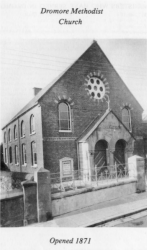
METHODISM COMES TO DROMORE
METHODISM came to Dromore in the year 1779 as
part of the ever-widening influence of the eighteenth century
revival. This remarkable revival began with the conversion of John
Wesley in a room in Aldersgate Street in London on 24th May, 1738.
Wesley's immediate response to his new-found experience of the grace
of God was to go forth to offer Christ to all who would listen. His
own brother, Charles, was converted about the same time and soon
became involved, not only as preacher, but also as hymn-writer, for
which he was to become famous. Soon many other itinerant preachers
were enrolled and before long the Gospel spread in Apostolic
fashion, touching not only cities and towns but also reaching
villages and rural areas.
John Wesley's first visit to Ireland was in 1747,
but it was not he who introduced Methodism to this country. This
honour belongs to one of his Preachers, Thomas Williams, who was
himself converted through the preaching of Charles Wesley. He came
to Dublin in 1746 and soon had gathered together a Society of
three-hundred members. In all, John Wesley visited Ireland
twenty-one times. His earlier tours were mostly South and West of
Dublin. It was not until his sixth visit that he came northward, in
the year 1756. Through his preaching and that of George Whitfield,
one of his colleagues, Methodism was established in Lisburn about
this time.
Wesley himself, however, does not appear to have
preached in Dromore, though it is highly probable that he passed
through it more than once. He was a meticulous diarist and left
behind him the precious legacy known as his "Journals," which give a
day by day account of his movements. Had he ministered here he
would, without doubt, have mentioned it with his usual comments,
favourable or unfavourable. There is but one reference to Dromore in
his Journal entered on Friday 3rd April, 1767." At the end of
Dromore I met Robert Williams who showed me the way to Newry."
Methodist Work in Dromore was the result of
evangelical outreach on the part of the Lisburn Circuit in 1779. In
that year one of the three Minister's stationed in Lisburn was a
young man called William Myles. He came over one day to Dromore,
took his stand in the street and proceeded to call sinners to
repentance. As frequently happened in those days with the Methodist
preacher, he met with threatening opposition. A man described as an
"excise officer" came forward under the influence of drink and with
upraised arm swore he would kill the preacher, but an inn-keeper
struck his arm and, diverting the blow, frustrated his purpose. The
word of God prevailed and a number of bystanders were won for
Christ. Those early converts became the first Dromore Methodists. A
Society was immediately formed as part of the Lisburn Circuit.
Among the converts in those early days was Maria
McNeill, described as "a poor, but respectable widow". Mrs. McNeill
opened her home in Meeting Street for Methodist Services. By 1804
this accommodation proved inadequate for the increasing
Congregation. The use of the Market house was sought but refused.
Consent of Conference was obtained for the erection of a Church, but
as no means were available to build, the Society had be content with
two small houses in Meeting Street. Out of these a large room was
constructed in which services were held for eleven years.

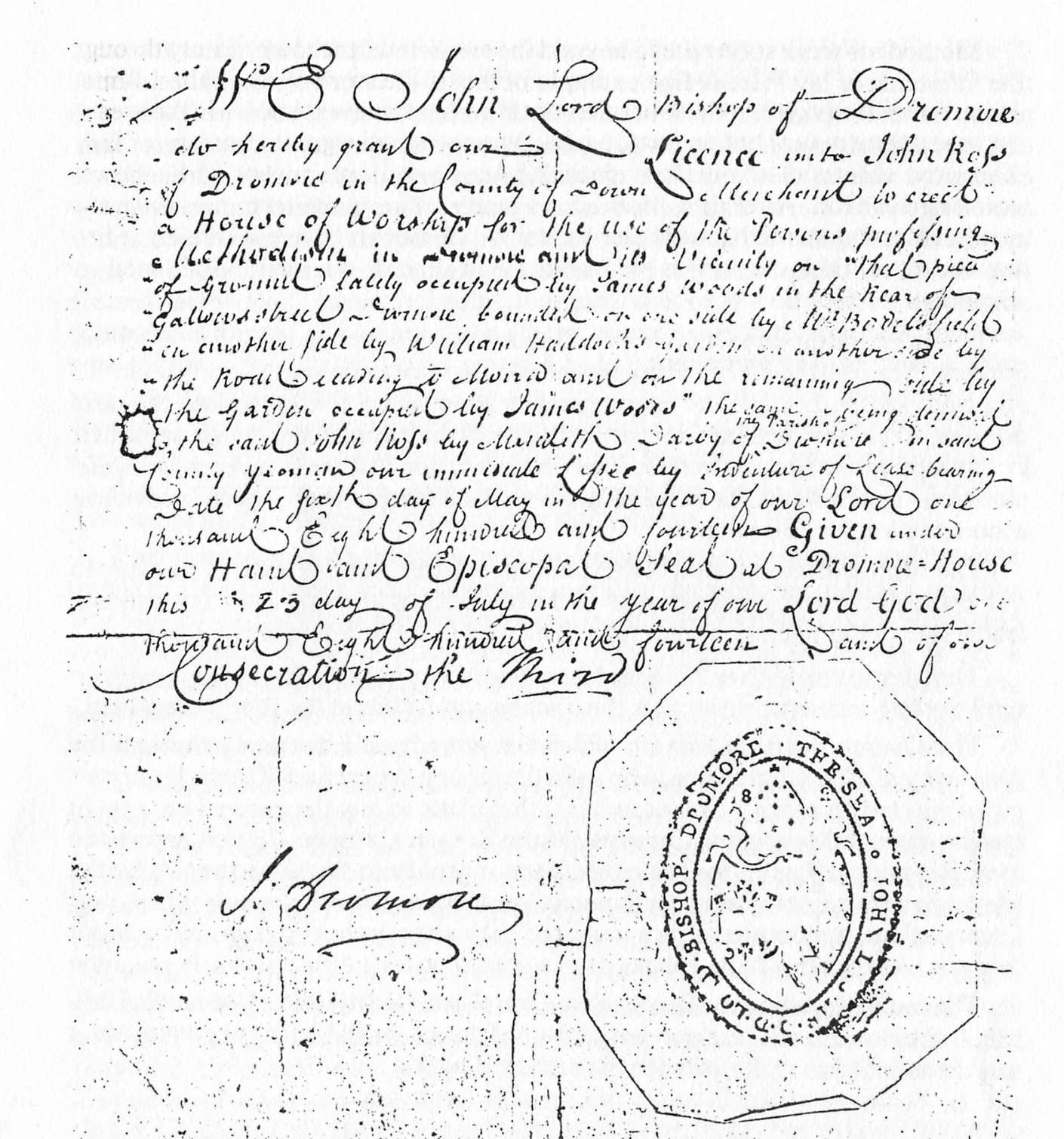
Methodists work soon spread beyond the environs
of the town mainly through the influence of lay folk. A fine example
of this is the story of one called James Hamilton of Ballykeel, some
four miles out in country. He was known in the area as "a wild young
man," but an aunt, a Mrs. Manown, had a great concern for him. This
lady, a Methodist from Downpatrick, often visited him and through
her he was converted to God. After this, Methodist Preachers were
invited to his house and soon a class was formed of which he was the
Leader for sixty years. One of the first members of this class was a
young man called Samuel McDowell of Drumaknockan, who was soon after
appointed as Leader and Local Preacher. He laboured with great
success in the Dromore district until 1808, when he went out as a
missionary to Newfoundland.

The present Church building was not the first proper
place of worship of the Dromore congregation. It was preceded by a
Church built in 1815. This came about mainly through the enthusiam
of a man called John Ross.
Ross was a native of Clare, near Lurgan. He came
to live in Dromore as a young man and having given his heart to the
Lord began to take part in the meetings of the Society. Very soon he
became a most acceptable Local Preacher and Class Leader. For forty
years he watched over the society with such care and devotion that
he is justly called "the father of Dromore Methodism."
This worthy man managed to secure the excellent
site on which our present property stands. The ground was leased to
the Methodists by Bishop John Leslie, the Church of Ireland Bishop
of Dromore at that time. The Church is fortunate in that it still
has in its possession the original copy of the lease. A photo copy
of which appears overleaf.
The wording, which in the reproduction copy is
somewhat blurred, is as follows:
"WE John Lord Bishop of Dromore do hereby
grant our Licence unto John Ross of Dromore in the Co. Down,
Merchant, to erect a House of Worship for the use of persons
professing Methodism in Dromore and its vicinity on "that piece
of ground lately occupied by James Woods in the rear of Gallows
Street, Dromore. Bounded on one side by Mr. Bodel's field, on
the other by William Haddock's garden, on the other side by the
road leading to Moira and on the remaining side by the garden
occupied by James Woods" the same being devised to the said John
Ross by Meridith Darby of the Parish of Dromore in the said
County, Yeoman our immediate lease by Indenture of Lease bearing
date the sixth day of May in the year of our lord one thousand
eight hundred and fourteen. Given under our Hand and Episcopal
Seal at Dromore House on this 23rd day of July in the year of
our Lord God one thousand eight hundred and fourteen, and of our
Consecration, the third."
(Seal)
| J. Dromore |
"Lord Bishop
of Dromore "
The Seal of John Leslie |
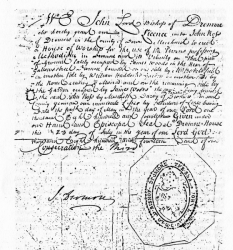
Having secured the site, John Ross wasted no time in proceeding with
the building of the new Church. The Church was opened and dedicated
on "the quarterly Love Feast Day" in September 1815. The collection
amounted to ?.1.11.6 but the congregation was so large many could
not get in. This building was a plain structure with forms and a
desk. Later a pulpit was added.

The preacher for the opening service was Rev.
William Kidd, who took as his text Nehemia 8:4. "Ezra the scribe
stood on a pulpit of wood which they had made for the purpose."
This church, which probably occupied only a
corner of the commodious site, remained in use for fifty-six years.
But as the Methodists continued to grow in number it became evident
that a larger place of worship was needed. So it is recorded that on
the 1st September, 1867, a tea-meeting was called to explore the
possibility of building a larger Church. Unfortunately the weather
was severe on that day and consequently the attendance was small. It
was decided at this meeting that "a circular with reference to the
matter be sent to all members and seat-holders asking for their
opinions." The outcome was a decision to erect the new Church, and
immediately a committee was formed to consider the steps to be
taken. 'This committee was chaired by Rev. Richard Maxwell, with
James McDade as secretary and James Frackelton as treasurer. The
Architect subsequently appointed was a Mr. William Gray, M.R.I.A.,
of Belfast. The foundation stone was laid on 28th April, 1870, by
James Frackelton in the presence of a large assembly.
Dromore Methodist Church as it stands to-day was
opened for worship on Sunday 19th March, 1871. The preacher on that
occasion was Rev. William P. Appelbey, B.D., L.L.B. The opening
celebrations were continued into the next Sunday, when Rev. William
Arthur, President of the Methodist College, preached in the morning
and Rev. Robert G. Jones in the evening. After a time, because ofthe
numerous applications for pews, a gallery was added to the Church,
providing accommodation for 350 people.
The successful conclusion of this building scheme
was due in large measure to the enthusiasm and perseverance of James
McDade, who gave outstanding leadership in the Society at that time.
The cost of the building was ?2,000.
The Manse was built in 1878 and the school room
in 1896. It was not, however; until the late nineteen-thirties that
the kitchen and toilets at the rear were added.
The Church owns the site on which the property
stands mainly through the generosity of a Miss Pantridge, who gave
the money to purchase it in the latter part of the nineteenth
century. Rumour has it that plans to buy the ground were set in
motion through Monsignor Cartnew, of the Roman Catholic Church
across the road. It is said that he sent for James McDade and told
him that he had heard that the Methodist site, together with the
Roman Catholic site, were to be put into the Land Commissions, and
implored him to get the cash and purchase the ground without delay.
It was then that Miss Pantridge graciously provided the purchasing
money.
The small car park to the South of the Church was
laid in 1966. A Masonic Hall, which stood on this site was purchased
by the Church, but being in poor condition it was demolished to make
way for the enclosed park.

DROMORE METHODISM - THREE CHURCHES
It may come as a surprise to many that at one time there
were three Methodist Churches in Dromore working side by side. In
addition to the one referred to already there was a "Primitive Wesleyan
Church" and a branch of the "Methodist New Connexion" body.
The Primitives came into existence through a serious
split in Methodism which occurred in the year 1818. It arose over the
administration, of the sacraments. During the early years of the
Methodist movement, Methodists looked to the established Church for such
ministries as the sacraments of baptism and the Lord's Supper. This was
chiefly due to the fact that Wesley in his earlier years had no wish to
break away from the Chruch of England of which he was an ordained
minister. He wanted to keep the evangelical movement, he had been raised
up under God to lead, within the mother Church. However, he himself in
the end found it impossible to hold to this position. Besides, the
widespread growth of Methodism and the fact that many of the converts
had no previous connection with the state Church, altered the pattern of
things. In addition, in many places there was no desire on the part of
the Anglican Church to cater for the Methodists. Very often the zeal and
enthusiasm of Wesley's followers was an embarrassment to them and hard
to contain.
Consequently a deep desire arose among the
Methodists to have the sacraments administered in their own Churches
by their own ministers. In Ireland Conference resisted the pleas for
change in this matter, until eventually permission was granted to
certain Northern Circuits, but this was soon extended to the whole
country. Unfortunately, this issue created a deep division, and a
section of the Church led by Rev. Adam Averell, broke away to form
the "Primitive Wesleyan Methodist Church". Their members elected to
continue their former relationship with the Church of Ireland and to
remain as Methodists within that Church. The convictions of the
Primitive were sincere and intense and, under the leadership of
Averell, Primitive places of worship were opened in many parts of
the country. (It should be noted here, however, that the Primitive
Methodist Church established in England, about the same time, had no
connection with the Irish Primitive movement and originated for an
entirely different reason).
This upheaval in Methodism greatly disturbed the
movement and brought unrest to almost every Circuit. Dromore was no
exception, but for a few years at any rate the Society was preserved
intact, mainly through the wise counsel and Godly influence of James
Ross. However, after a time the Primitives gained a footing in the
town and, through the instrumentality of Rev. John Mcllroy, a house
was rented in Gallows Street in which services were held in 1827.
Three years later a Church was opened. Exactly where this Church was
sited we are not sure.
It is appropriate at this point to relate that a
Primitive Methodist Society was established in Dromara and a Church
erected and opened on 13th September, 1835. This Society later
became part of the Dromore Circuit. The story of the building of the
Dromara Church makes interesting reading as recorded in Crookshank's
History. It was largely through the energies and faith of a
dedicated Layman by the name of Hill, who is described as "a man of
deep piety and liberal spirit." He allowed no obstacle to daunt him
in his resolve to build a place of worship. "He laboured with his
own hands and prayed and laboured, night and day, until, without
having one shilling to assist him, the object of his prayerful
solicitude was accomplished." Methodist work in Dromara was
discontinued early in the present century. The Church remained in
the care of Dromore long after it ceased to be used for services.
For a time it was let to the Education Authority for use as a
Technical School. Eventually, in 1969, it was sold to the local
Apprentice Boys.
The Primitive Weslyan Methodists continued for
about sixty years working and witnessing alongside Wesleyan causes
in many parts of the land, with the passage of time, however, most
of the original differences were lost sight of and by 1878 a union
was effected. The adjectives in their titles were dropped and the
term "Methodism" alone was henceforth used.
It is worth noting here that the name "Wesleyan"
written in the stone-work over the Dromore Church door reflects the
days of division, the Church having been built shortly before the
Union.
The Methodist New Connexion Church began in 1841
was a branch of a break-away group in the British Conference. This
separate body was started during :the troubled years which followed
Wesley's death. It was founded by a minister called Alexander Kilham
who had been expelled from the British conference because of
unfounded complaints he made regarding the dictatorship of
Conference. About a dozen Methodist New Connexion
Churches were established in Ireland including one in Dromore. It is
interesting to note that two of the sister Churches on the Lisburn
and Dromore Circuit, Broomhedge and Priesthill, had their origins in
this branch of Methodism. We know, however, very little about the
history of the New Connexion Society in Dromore, how long it
survived of where its place of worship was located. This brand
Methodism eventually lost its, identity, having merged with the
larger Connexion in 1905.

WHILE it is comparatively easy to write about
bricks and mortar and matters of administration in the history of a
Church, it is quite impossible to give an account of the things that
have to do with its witness and influence. Here we are dealing with
the realm of the spiritual and the unseen , something which can
never be truly assessed.
We are confident, however, that the Methodist
Church in Dromore has for two centuries sought to accomplish the
purpose which John Wesley believed God had raised up Methodism to
fulfil, that of "Spreading scriptural holiness throughout the land."
It has witnessed to the saving gospel of Jesus Christ and tried
faithfully to serve the community in His name. The work has been
carried on Mainly along the traditional lines characteristic of our
denomination. In the early days of Methodism and indeed for several
generations the Class Meeting played a significant role. Every
Society was divided up into groups or classes each under la
dedicated Class Leader. Through the Class members found fellowship
and .were able to care for one another.
The records show that at one time Dromore Society
had as many as twelve Classes. These met regularly and were located
as follows: Mother's Close, Magherabeg, Rockhill, Greenogue,
Waterside, Ballykeel (upper) Ballykeel (lower), with five Classes in
the town itself.
The Cottage Meeting was once an effective means
of witness and outreach in Methodism, particularly in the rural
areas. Dromore seems to have been very active in this respect, and
some of the older members of the Church have cherished memories of
attending such meetings in their childhood. A long list of the areas
and homes where regular meetings were held is recorded in an old
schedule book. It includes the following: Milebush Farm, Drumandoney,
Lurganbann (Mrs. Weir's), Ballinaris (Mrs. Kilpatrick's), Ballkeel
(Mrs. R. Watson's), Drumillen (Mrs. Thompson's), Backnamullagh (Mr.
Bowman's and Mr.Hutchinson's), Old Hillsborough Road (Mr. McKee's)
and Rampart Street (Miss Arlow's). Most of these were monthly
preaching places, some were fortnightly and a number quarterly.
Services were also conducted regularly over many
years in Orange Halls and. School Houses, in places such as, Quilly,
Ballymacormick, Magherabeg, Upper Ballykeel, Drumillen and Skeogh.
One minister records that, "More places are open if one could but
find the time." This indeed seems to have been a period of
remarkable opportunity, when the gospel was offered to many people
in many places. The fact that, for most of its history, Dromore was
a single Society Circuit did enable the minister to carry on a local
ministry of this kind in a way which, under any other circumstances,
would not have been possible.
An attempt was made in more recent times to reopen
regular services in some of the halls already mentioned, but without
success.

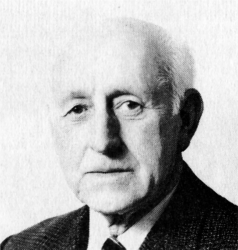 |
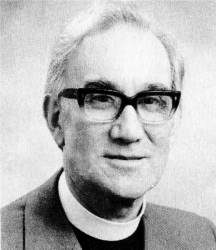 |
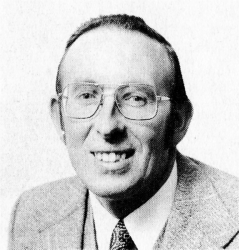 |
JOHN MITCHELL
Senior Society Steward |
REV. J. LENNOX
BOOTH.1976 ? |
DENNIS E. McCRACKEN Junior Society
Steward |
.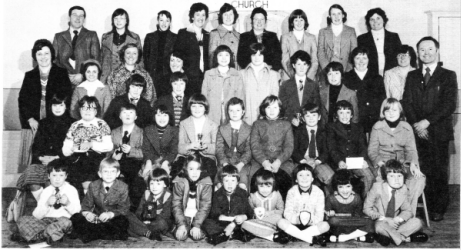
The Sunday School,1979
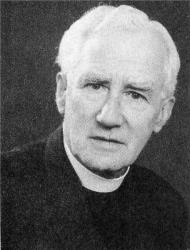 |
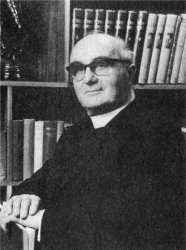 |
Rev.
Robert F. C. Rooney
1962 ? 1970 |
Rev.
Thomas J. Kyle
1970 ? 1974 |
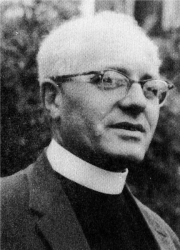 |
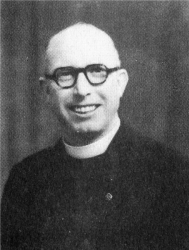 |
Rev. E.
Arnold Edwards
1974-1976 |
Rev.
Samuel H. Currie
1936 ? 1940 |
Dromore has experienced periods of revival at
different times over the years. Crookshank in his "History of
Methodism," tells of the effect of the 1859 Revival. He writes "In
the gracious fruits of the revival the Dromore Circuit, where the
Rev. Oliver McCutcheon was stationed, participated largely, much
prayer was offered, the congregation increased, and at length the
Lord answered by fire. The Holy Ghost descended in converting power,
first in the houses of the people and afterwards on the
congregations; many were cut to the heart and led to cry for mercy.
It was a deeply interesting spectacle, and on one occasion those
recently brought to a knowledge of the truth, marched in solemn
procession through the streets, singing hymns, and then crowded into
the Wesleyan Chapel. The country parts of the Circuit, however,
shared even more largely than the town in these showers of
blessing."

Then earlier in the present century, when the
famous Ulster evangelist Billy Spence was to the fore, a wonderful
mission took place through which many were converted. It is reported
that on one particular night the Church was so crowded that the
gallery creaked and was in great danger of collapsing. John Graham,
father of Sir Clarence Graham, stood up in the midst of the tension
and begged for God's sake ? that the congregation keep still and not
to allow any more in. Two strong beams were put in immediately after
this to support the gallery.
In its care of young people the Church over the
years has fulfilled a quiet but effective ministry. When the Band of
Hope Temperance Organization was a force in the community, Dromore
was to the forefront. There were periods early in this century when
the Band of Hope group, under Methodist auspices had on its rolls
around two-hundred girls and '.rays with attendances at regular
meetings averaging one-hundred.
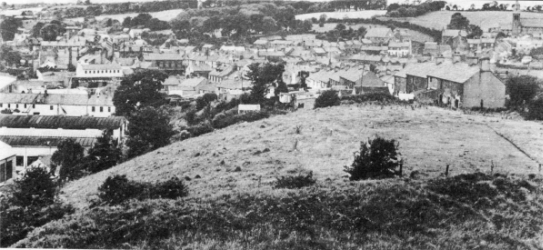
Dromore before present redevelopment
For about half a century the Church continued,
through this organization, to uphold temperance ideals among its
young people. With the passing of the years, numbers declined, even
as the Band of Hope regrettably diminished everywhere in influence
and appeal.
The Christian Endeavour movement was not long in
existence before it was adopted by Dromore. It came to Ireland from
the United States in the last decade of the nineteenth century, and
by 1904 both a Junior and young Peoples' Society were formed in
Dromore. Very soon Junior membership had reached seventy, and the
Young Peoples' Society had an enrolment of eighty.
Membership in the society never again reached the
same high level as was experienced at the beginning. Nevertheless,
over the years Christian Endeavour has played a worthy part in the
life of the Church, promoting evangelism among young people,
providing fellowship and training in Christian service and witness.
Many attached to the congregation today are grateful for its
influence upon their lives. Being an interdenominational
organization, it has always been open to receive young people of
other Churches into its fellowship, yet the rise and fall in
membership over the years has always been related to the number of
Methodists available to join. In keeping with the trends of the
times, C.E. generally is being replaced by other types of Youth
Groups.
Uniformed organizations have not played a
prominent part in the life of the Church. The Second Dromore Boys'
Brigade Company was started in 1942 and ran successfully for seven
years. It had to be wound up chiefly because of new Companies that
were established in the town by Churches of other denominations. The
First Dromore Girl Guides Company was introduced by Mrs. Clarence
Graham (later Lady Graham) because of her concern for the welfare of
girls in the town and district. It was opened in 1941 with the
Methodist Church hall as its headquarters. This Company continues to
flourish, and many girls have greatly benefited over the years from
its training and fellowship. It is an "open " Company and , while
there are always some Methodist members on the rolls, most of the
girls are drawn from the wider community.

After the death of Lady Graham a Memorial Window
was installed on the south side of the Church as a tribute to her.
It bears the following inscription:
"In affectionate remembrance of Lady Graham, 14th May, 1907 ? 1st
January, 1954." DIVISIONAL COMMISSIONER GIRL GUIDES
"This window was installed by the First
Dromore Company Girl Guides, to give grateful thanks to God for,
and to perpetuate the memory of, the kindness, love and
leadership of their founder and First Captain. She gave herself
continuously without counting the cost."
One of the unique facilities of Dromore Church at
one time was the large and accommodating lending library. An account
of the opening of this library, written by Rev. Samuel Weir,
appeared in the "Irish Christain Advocate" on 1st February, 1884. It
reads as follows: "To all ministers who travelled this Circuit, and
to all friends of the cause here, it will be interesting to learn
that after six years of prayerful and persevering labour, Mr. James
McDade has succeeded in purchasing and collecting one of the best
public libraries connected with any congregation in the United
Kingdom. There are in it 1625 volumes, all valuable books and of
varied character, suited to minister, student, Sunday School teacher
and scholar and to the general public. Here are such books as `The
Life and works of Christ' by Dr. Geikie, and most interesting and
profitable stories from our own Bookroom catalogue, and from the
catalogue of the Religious Tract Society. This week I had the
pleasure of declaring the library open to the public, any of w:iom,
for a mere nominal sum, may receive any book every week he pleases.
Already the benefit derived from the choice selection has begun, but
it will take years fully to disclose the advantages which our good
brother McDade has conferred upon this town and neighbourhood by
this his latest work of indomitable zeal. Would that some of the
brethren of other Circuits could see for themselves what has been
done! It might stimulate them to go and do likewise. It is but right
to add that this library could not have been opened so soon only for
the self sacrificing efforts of the Misses Dickinson of Dromore who
with their usual kindness covered upwards of 1000 books with black
linen. Other ladies emulating their noble example completing the
work in the best possible manner."
Little else is known about this excellent library
or how long it was of service. We do know, however, that it was
still there in 1909, as an entry in the Schedule Book of that time
indicates that "Mr. McDade's Books" were insured for ?200. This is
exactly the same value a was placed on the church hall itself!
The Sunday School has always been at the centre
of the Church's work amongst the young. In this field Dromore has
not been found wanting. Over many year there was a flourishing
afternoon School which catered for the children of every
denomination, and at one time there were as many as two-hundred
pupils on the rolls, with average attendances of around one-hundred
and fifty. The time came, however, when afternoon schools were
opened in some of the other Churches in the town. This brought a
great fall in attendances, and in 1963 the Methodist afternoon
school was closed.
The morning School, which has been mainly for the
children of our Methodist families, continues to do valuable work.
It has never been a large School; the numbers have risen and fallen
over the years in relation to our Junior Membership. Today there are
thirty children on the rolls. Until 1976 the time of meeting was
10.00 a.m. but in order to facilitate families living in the
country, a decision was taken to hold the school during morning
service as is the practice in many other places. The children share
in the early part of the service and then retire to their classes.
This experiment seems to be acceptable to both parents and teachers.
It speaks well for the life of the congregation that it has been
possible to find twelve teachers who do duty on a rota basis, which
means that no teacher is deprived of morning worship except for a
few months in the year.
An important feature of the Sunday School is its
emphasis on missionary work through the Junior Missionary
Association. The J.M.A. collectors, actively assisted and encouraged
by some adult members of the congregation, raise considerable
amounts year by year. Many D.S.O. Medals and Bars were presented
this year when the total collected was ?360, an increase of ?84 over
last year.
Missionary interests are also energetically
promoted by the local Branch of the "Methodist Women's Association."
This group operated for many years under the former title, "Women's
Department." The Branch meetings are held monthly, and the members
enjoy the fellowship, and scope for Christian service these meetings
provide. Large sums of money are raised year by year, mainly through
an annual sale and the Missionary boxes.
Dromore seems to have been a fruitful recruiting
ground for the Christian Ministry. There is a long list of
candidates which includes the following: Henry Price, a talented man
and an able preacher; Robert G. Jones, whose son George C. Jones,
L.L.D., became a prominent minister in the American Methodist
Church; John Saul, D.D., L.L.D., who was a good linguist, and whose
three sons entered the Wesleyan Methodist Church in England; James
Black, whose two brothers became ministers in the Presbyterian
Church: James Thompson and Joseph Frazer, who went to America;
Samuel Cowdy and George C. Mayes, who served under the British
Conference; Joseph Spence and Samuel McDade, who emigrated to
Australia and served in the Methodist Church there; George W.
Spence, who became a minister in New Zealand; John Scott McDade,
John Magill, Henry McDowell, Hill Linsday and Henry Frackelton, all
of whom served under the Irish Conference.
In more recent times, Dromore gave Rev. Robert C.
Acheson, who rendered fine service in Burma before going to America,
and Duncan Alderdice, who is at present Superintendent of the
Fivemiletown Circuit.

TI would seem that Conference had difficulty over the
years in establishing Dromore Circuit-wise. This may have been partly
due to its geographical location. It lies on the edge of two Districts
and is not close to any other sister Society, being almost equidistant
from Banbridge, Moira, Lurgan and Lisburn.
The Society, having been brought into being by
the Lisburn Circuit, then in the Belfast District, remained part of
that Circuit for fifty-six years. In the year 1835 Conference
decided to unite Dromore with Moira, which was then on the old Newry
District. This in our day may appear to be a strange union as Moira
scams to have few links with Dromore. However, in those far-off
days, when the main thoroughfares were not as well defined as they
are now, Moira and Dromore were considered to be easily accessible
to one another. Indeed, the road that runs past the Church in
Dromore was sometimes called the Moira Road. Moreover. the
horse-back preacher found it comparatively easy to negotiate the
criss-cross of roads between the two places.
In 1854 this union with Moira was discontinued,
and Dromore became a Circuit on its own. The link with Moira,
however, was not completely broken. Conference laid down that the
Dromore Minister would supply one Sunday morning in four on the
Moira Circuit. The exact entry under "Stations" in the Minutes of
Conference reads, "Dromore: Edward Harpur, who is to supply one
forenoon each month on the Moira Circuit."
By the year 1859 Dromore again came under the
Belfast District Synod. A reorganization of Districts took place
that year, when the Newry District became known as the Portadown
District with little change in terms of Circuits covered by the
Synod, except that Dromore was transferred to Belfast, and
Aughnacloy in Tyrone, on the Enniskillen and Clones District, to
Portadown. The Enniskillen and Clones Districts had been united to
form one District the year before, in 1858.
There are a few entries in the 1878 minutes of
Conference involving Dromore which must remain a mystery. In the
list of Stations in the Belfast District, Circuit No. 136 reads
"Dromore, Thomas Knox," but No. 137 reads "Banbridge and Dromore;
Thomas Pearson, Richard Little (Ballynahinch)." In the same
"Minutes," Circuit No. 157 reads "Banbridge; William J. Storey."
At this point in time it is obviously impossible
to sort out the apparent confusion inherent in these Minute entries.
It may have had something to do with the overlapping of the
Primitive and Wesleyan branches of Methodism, which achieved union
in 1878. Or perhaps it is due to a slip on the part of the Editorial
secretary of the Minutes of Conference!
Dromore was to remain undisturbed as a single
Society Circuit for the next one hundred and twenty-two years. In
1976 it was united with Lisburn to form the present "Lisburn and
Dromore Circuit." Thus after one hundred and forty-one years'
separation, Dromore Society was linked again with the Circuit which,
under God, gave it birth. Naturally, Dromore Methodists were
reluctant to lose their identity as a Circuit but various pressures
within the Church as a whole made this inevitable. A growing
shortage of ministers and ever increasing costs were to bring about
several unions within the Connexion during the nineteen sixties and
seventies.
In 1962 Conference set up what became known as
"The Manpower Committee." Its terms of reference were "to consider
the present structure of Stations throughout the country so that our
Ministerial manpower be better deployed and our work more
effectively discharged having regard to the distribution of the
population in Ireland today and the peculiar needs of various
areas."
This high-powered Committee carried on
deliberations from several years but it was not until 1967 that
Dromore Circuit received a letter from the Secretary of the
Committee suggesting that the Quarterly Board should consider the
possibility of taking responsibility for Blackscull Society on Moira
Circuit.

This proposal was favourably received, but the
matter was deferred for a year. Apparently, no further steps were
taken in this direction but, later it was asked that consideration
be given to amalgamation with Banbridge Circuit. As a result, some
informal talks took place with Banbridge officials, but no action
was taken. On the 3rd October, 1968, a deputation from the Manpower
Committee met with Circuit officials. The Dromore-Banbridge Scheme
was given further consideration, but it was at this meeting that
union with Lisburn was first mentioned, and opened up for careful
exploration.
The matter continued to simmer at Connexional,
District and Circuit level for the next few years, when
responsibility for negotiations was transferred to the newly formed
Down District Synod. The various options were reassessed and finally
at a special Quarterly Meeting held on 3rd April, 1976, it was
agreed that Dromore should link up with the Lisburn Circuit.
The voting for this proposal was, 6 for, 1
neutral and 1 against. Immediately, negotiations were entered into
with Lisburn Quarterly Board and a satisfactory basic of union
agreed. Conference gave its approval to the scheme in the following
terms: "That the Lisburn and Dromore Circuits be united and staffed
by two ministers, under the name of Lisburn and Dromore."
The final Quarterly Meeting of the Dromore
Circuit met on 24th June, 1976, presided over by the retiring
Superintendent, Rev. E. Arnold Edwards.
The Rev. J. Lennox Booth, newly appointed to the
Lisburn and Dromore Circuit, was given pastoral oversight over the
Dromore Society in addition to Priesthill and Broomhedge. Mr. Booth
was officially welcomed to the circuit and installed in Dromore
Church in a service at 8.00 p.m. on Sunday, 11th July, in the
presence of a large congregation representing the whole of the new
Circuit. This service was conducted by the Superintendent, Rev. J.
Winston Good. Mr. John Mitchell, senior Society Steward, Dromore,
welcomed Rev. J. Lennox Booth and his family on behalf of the
Circuit.
The new minister moved into Broomhedge manse, but
this was considered to be a temporary arrangement, pending a final
settlement as to where the second minister should reside. Broomhedge
manse was in need of extensive renovations and Dromore manse was in
a similar condition.
Synod had recommended that consideration be given
to selling or letting both the existing manses and securing a new
residence more central to the three congregations. The point had
been reached when Dromore house was about to be offered for sale,
but after several meetings of the Quarterly Meeting and special
committees it was decided to do an extensive scheme of repairs on
the Dromore property.
This proved to be a major task as the house was
found to be in even worse condition than had been expected, mainly
because of structural deterioration and dampness. In addition, an
almost complete refurnishing was necessary. However, after twelve
months, the work was completed, and Rev. J. Lennox Booth and family
took up residence on 3rd July, 1978. This is now a well-equipped
modern home and should be trouble-free for some years to come.
Grants towards the repairs were received from the Northern Ireland
Housing Executive and from the Home Mission Fund towards the
furnishings. Nevertheless a considerable sum of money has had to be
raised on the Circuit for this project which is now almost free of
debt.
The Dromore congregation has contributed
generously to the repair fund, but without the support of the rest
of the new Circuit the manse could not have been restored.
At the time of the union in 1976 Dromore had
graciously conceded the loss of the manse and the resident minister.
However this subsquent change of policy has restored both, and for
this the Dromore people are most grateful.

This brief outline of the history of Dromore
Methodism since 1779, leaves much ground uncovered. Shortage of
space and lack of information have made it impossible to give any
real account of the contributions made over the generations, by a
host of dedicated men and women. Unfortunately, there is no proper
list of those Methodists from Dromore, whom the great Lord of the
Church numbers among his "good and faithful servants." Undoubtedly
He has entered the names of many whom a human chronicler would leave
out. It is certainly true, however, that but for the consecration,
sacrifice and vision of those who have borne a faithful witness,
generation after generation, there would be no Bicentenary to
celebrate.
The Methodists of to-day, in Dromore, are
grateful to God the great heritage which is theirs. They look
forward to the future with hope, and face the third century of
Methodism with confidence, remembering that Jesus Christ, the Head
of the Church, is "the same yesterday, to-day and forever."
The town of Dromore, in recent times, has been
passing through a period of considerable change and redevelopement.
A number of accomodating housing estates have been built, and
radical steps have been taken to rid the town of out-of-date
dwellings. Whole streets of houses have recently been demolished and
modern homes erected. This programme of re-developement is not yet
complete, but when is, Dromore will be one of the finest towns in
Province. Indeed, Dromore appears to be on the threshold of a period
of growth and expansion. Being strategically placed, only a short
distance from the Motorway, and therefore, within easy reach of
Belfast, it could well be, that the town is about to become an
attractive residential and industrial centre.
The Churches, in this community, are likely to be
faced with new challenges and opportunities in the coming years. In
this Methodism is ready, as in the past, to play a worthy part in
offering the unchanging gospel of our Lord and Saviour, Jesus
Christ.

APPENDIX
MINISTERS WHO HAVE SERVED IN DROMORE
| 1832 John Hill |
1898 William H.
Quarry |
|
1842 John Herrington |
1899 John Johnston |
|
1844 John Jebb |
1902 H. H. Macmahon |
|
1845 George Burrows |
1905 William S. Morris |
|
1848 R. A. Devers |
1908 Moses S. Lewis |
|
1851 William McGarvey |
1911 Fredrick A. Trotter (Second term) |
|
1852 Edward Harpur |
1912 John Elliott |
|
1855 James Donald |
1916 H. H.
Macmahon (Second term) |
| 1857 Oliver
McCutcheon |
1919 Henry
Ranson |
| 1860 William
Mulloy |
1923 F. H. Scott
Maguire |
| 1863 James Black |
1926 Horatio G.
Collier |
| 1866 James
Maxwell |
1931 James P.
Carter |
| 1868 John Oliver |
1936 Samuel H.
Currie |
| 1871 Crawford
Johnston |
1940 A. Ernest
Nelson |
| 1873 Hugh
McGahie |
1941 J. Wesley
Doonan |
| 1875 Robert J.
Meyer |
1945 J. Dwyer
Kelly |
| 1877 Thomas Knox |
1947 R. Roycroft
Sayers |
| 1880 Charles H.
Cruikshank |
1952 William J.
Carson |
| 1883 Samuel Weir |
1957 Charles
Keys |
| 1886 W. Sproul |
1962 Robert F.
C. Rooney |
| 1889 John Wilson |
1970 Thomas J.
Kyle |
| 1892 Fredrick
Trotter |
1974 E. Arnold
Edwards |
| 1895 Thomas Knox
(Second term) |
1976 J. Lennox
Booth |
MEMBERS OF THE LEADERS' BOARD, 1979
Society Stewards: John Mitchell, Dennis E. McCracken
Benevolent Stewards: Francis G. Silcock.
Pew Stewards: Aubrey McCracken, John McCracken.
Freewill Offering Stewards: Hugh J. Erwin, James Greer, G. Vivan Brown.
Trust Steward: William Beattie.
Overseas Missions Secretary: Mrs Francis G. Silcock.
Home Missions Secretary: Mrs. Hugh J. Erwin.
Sunday School Superintendent: Cecil Gracey.
M.W.A. Representative: Mrs John Mitchell.Covenant Secretary: James Greer
Leaders' Board Secretary: David Trotter.
Congregational Representatives: Mrs Violet Graham, Thomas J. Irwin, Mrs
James Watson.
Class Leaders: Kenneth Bowman, Harold Cummings, David Trotter.
METHODIST WOMENS' ASSOCIATION OFFICERS
President: Mrs J. Lennox Booth.
Secretary: Mrs Campbell Houston.
Treasurer: Mrs. Hugh J. Erwin.
Organists: Mrs Francis G. Silcock and Mrs. Hugh J. Erwin.
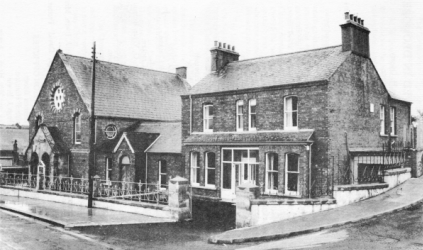
Church and manse
A Souvenir Booklet to commemorate
the Bicententary of Dromore
Methodism
BANBRIDGE
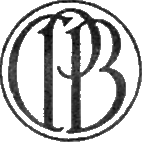
CHRONICLE PRESS
LTD.
 |